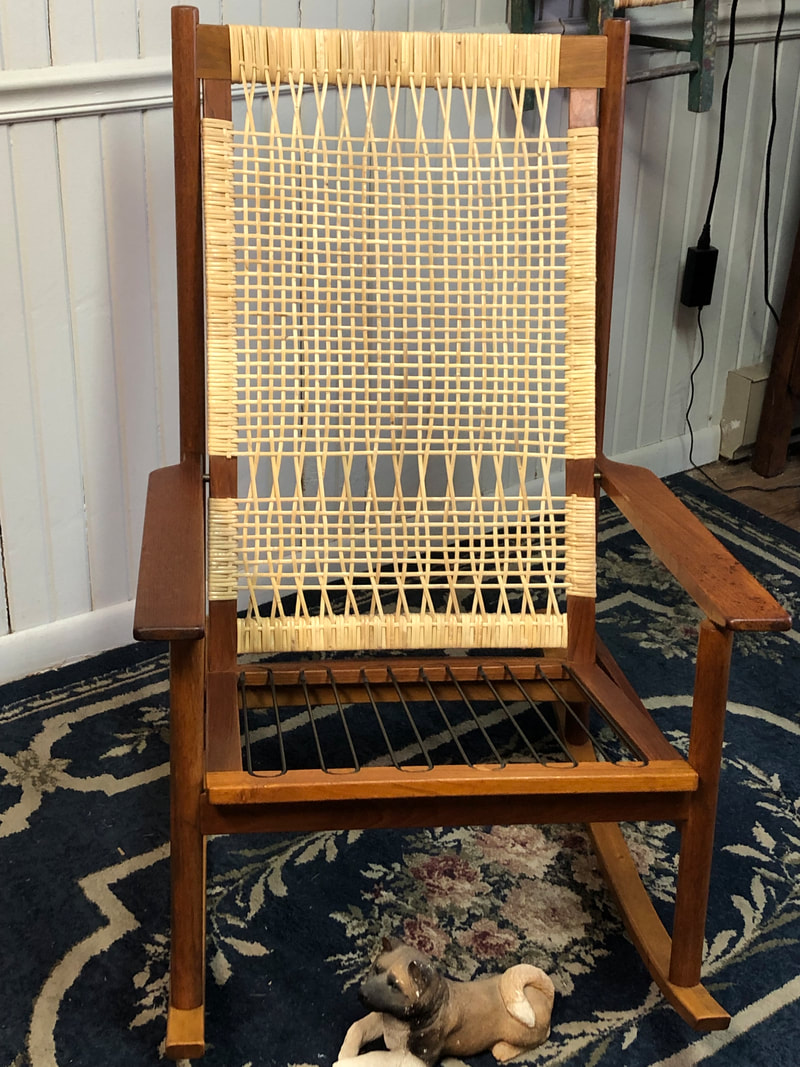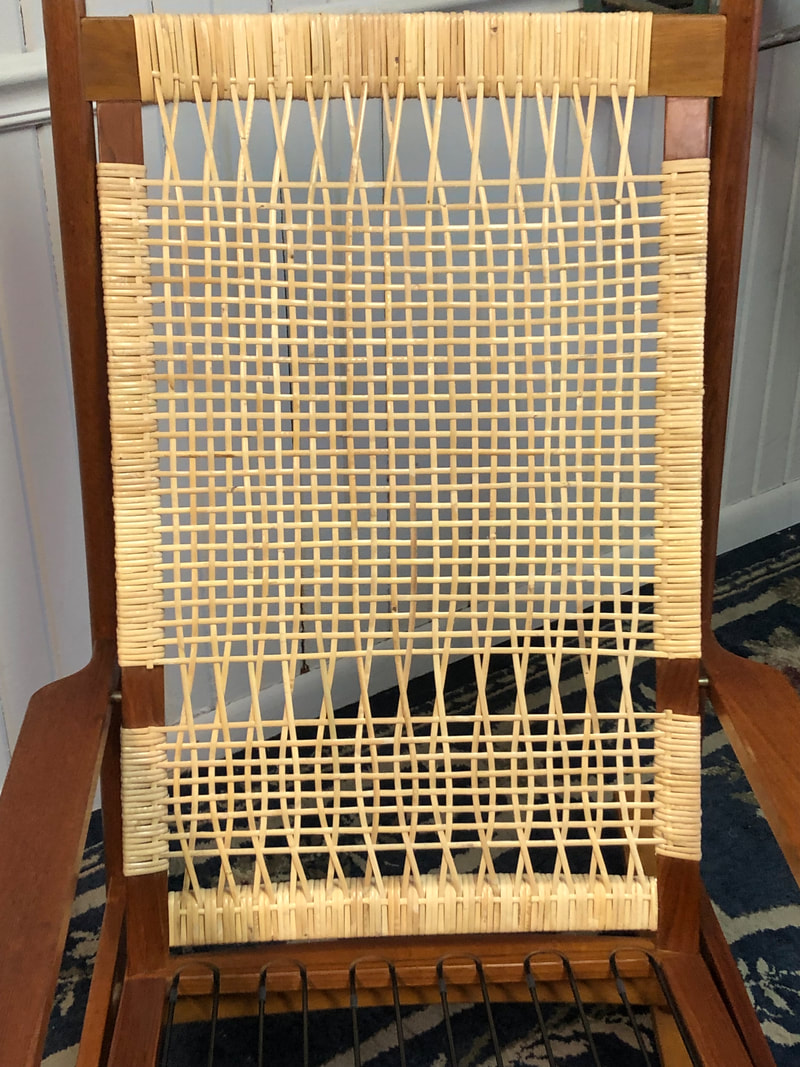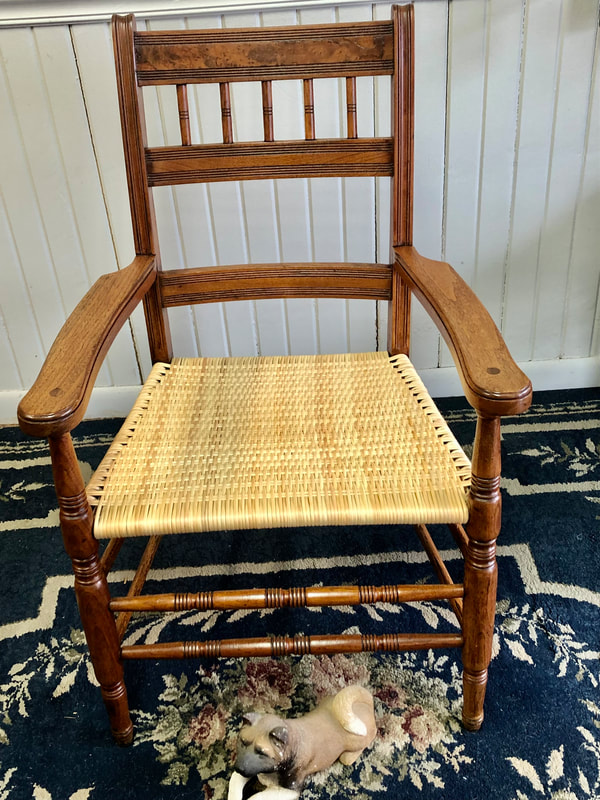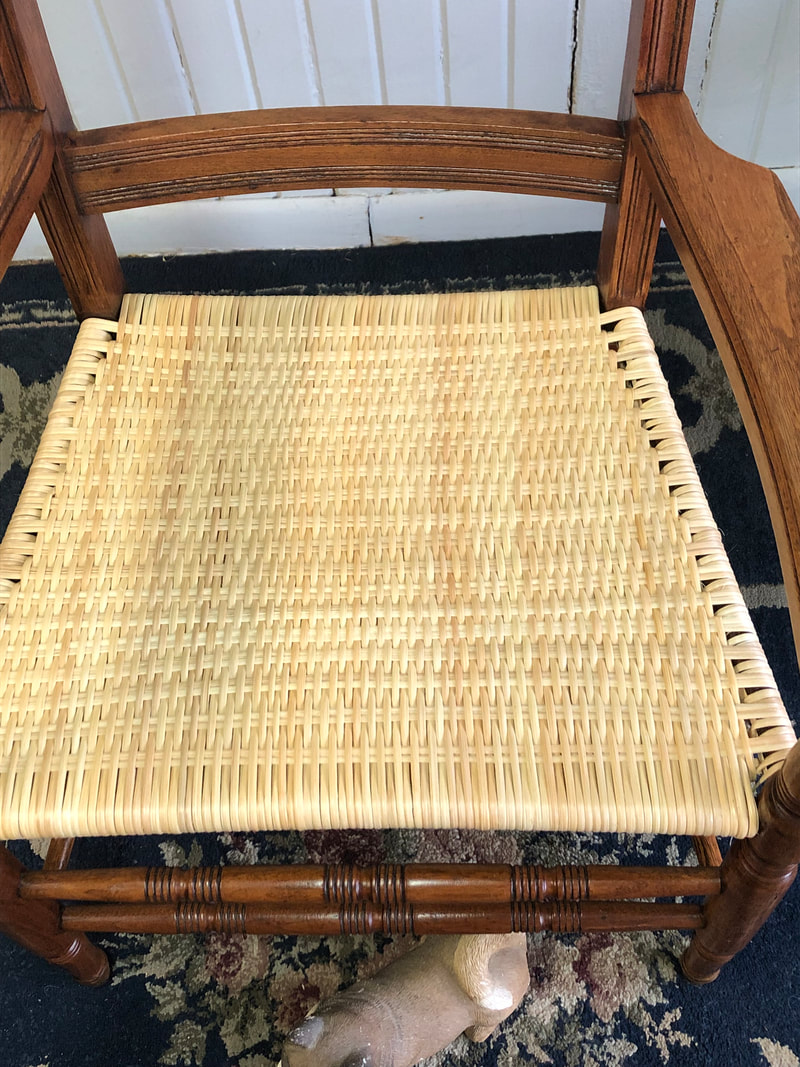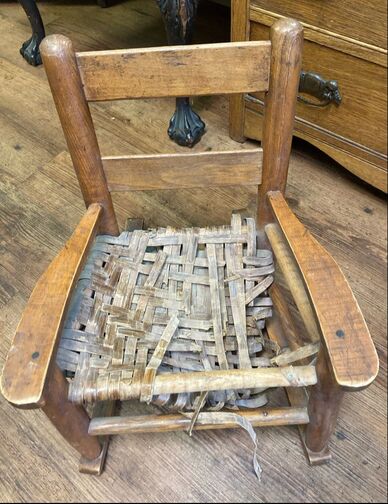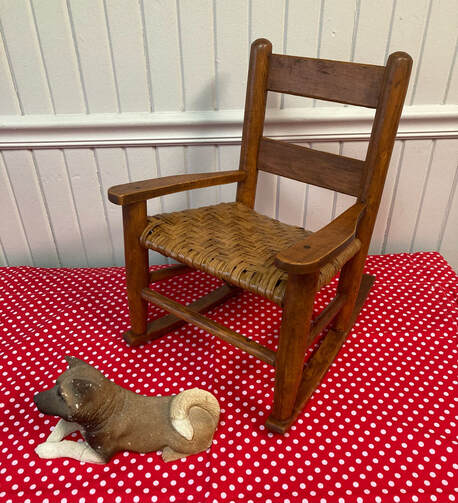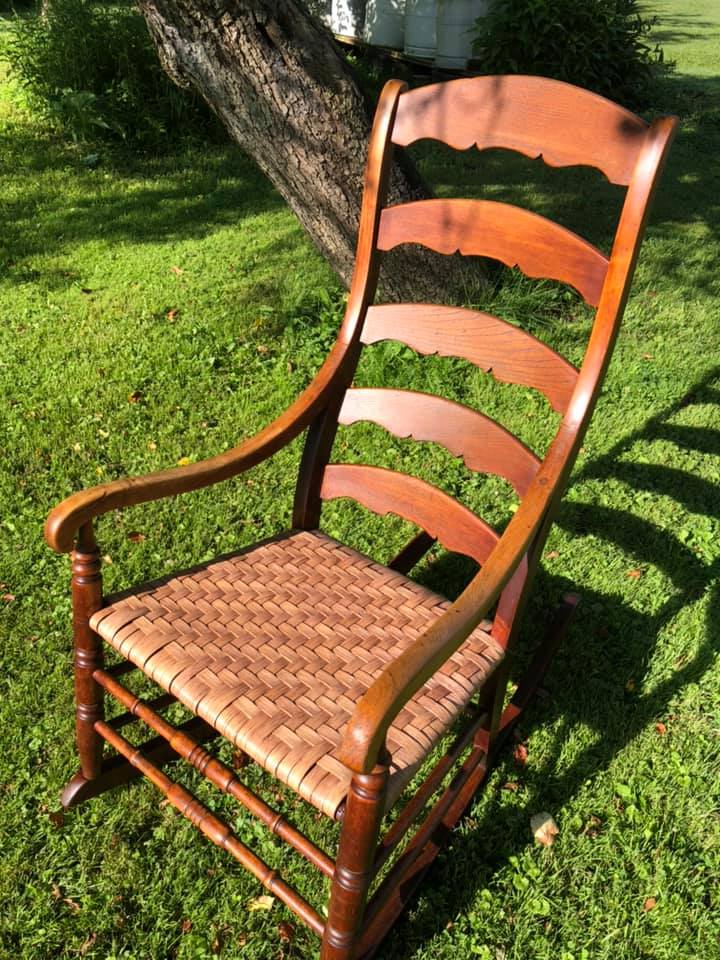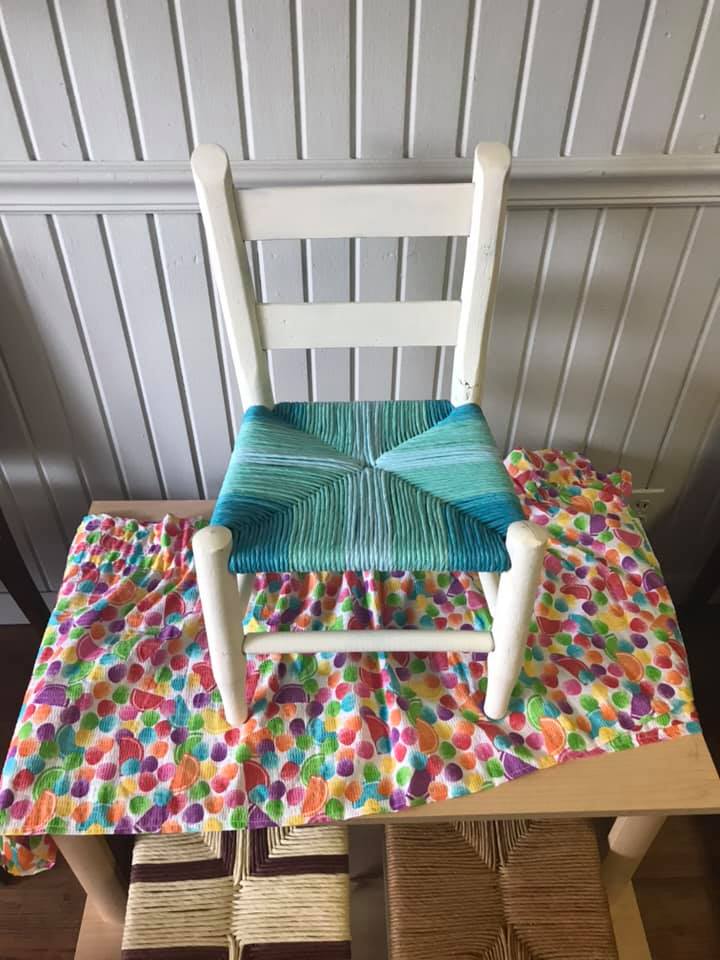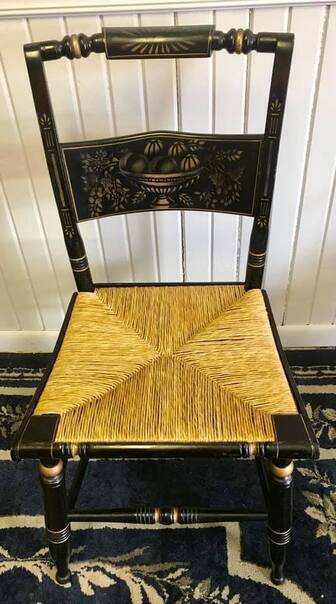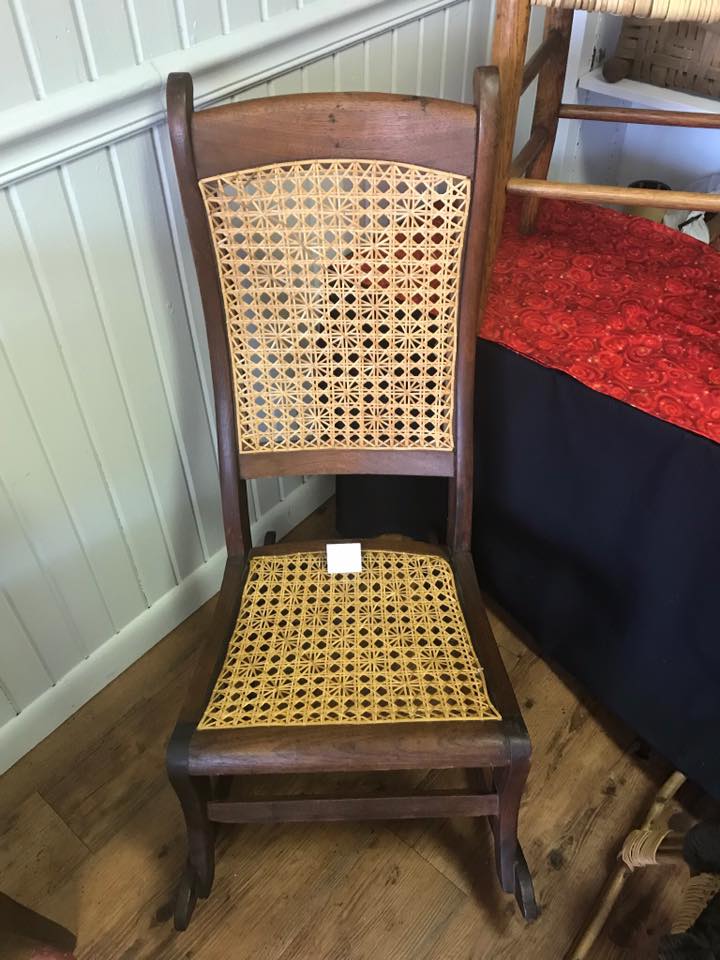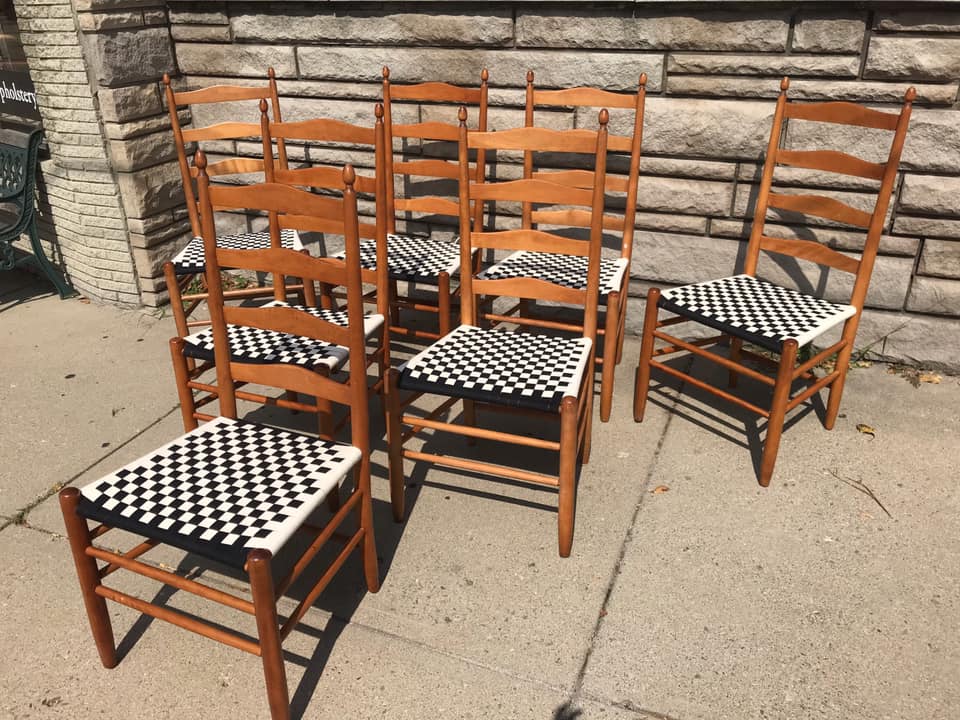Seat Weaving
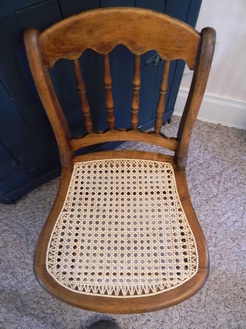
The art of seat weaving has existed for thousands of years. The earliest pieces in existence are items made from cane and rush which were found in the tombs of ancient Egypt. China is believed to be the originator of the caned chair from where it then migrated to Europe. Wicker and rush were used in furniture making, it is known, in the Middle Ages.
Cane and wicker furniture, in America, became extremely popular from the 1860's forward, first thru the Victorian era and then into the Arts and Crafts era of furniture making. Seat weaving comes in many styles...cane, rush, wicker, pre-woven cane and many distinct design patterns.
Unfortunately the art of cane weaving, handed down from master to apprentice, is a skill few choose to pursue. Few true artisans of the craft exist today and as a result many beautiful pieces of furniture have been discarded. Don't allow that beautiful rocker that was your grandmother's be sent to the attic because the seat is torn. Let us return it to the way it was when it sat in grandma's parlor.
Cane and wicker furniture, in America, became extremely popular from the 1860's forward, first thru the Victorian era and then into the Arts and Crafts era of furniture making. Seat weaving comes in many styles...cane, rush, wicker, pre-woven cane and many distinct design patterns.
Unfortunately the art of cane weaving, handed down from master to apprentice, is a skill few choose to pursue. Few true artisans of the craft exist today and as a result many beautiful pieces of furniture have been discarded. Don't allow that beautiful rocker that was your grandmother's be sent to the attic because the seat is torn. Let us return it to the way it was when it sat in grandma's parlor.
